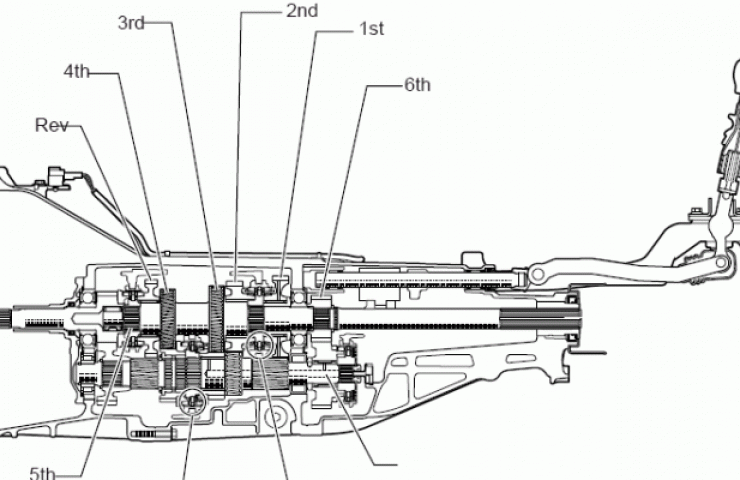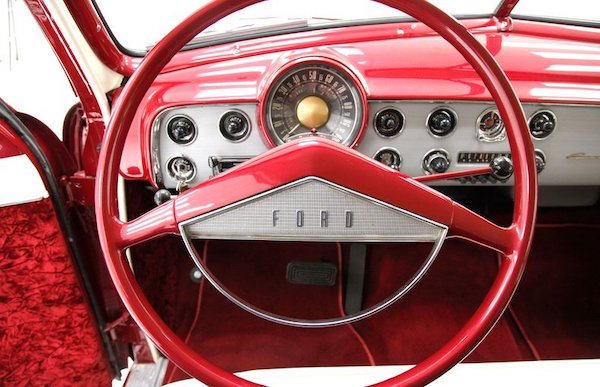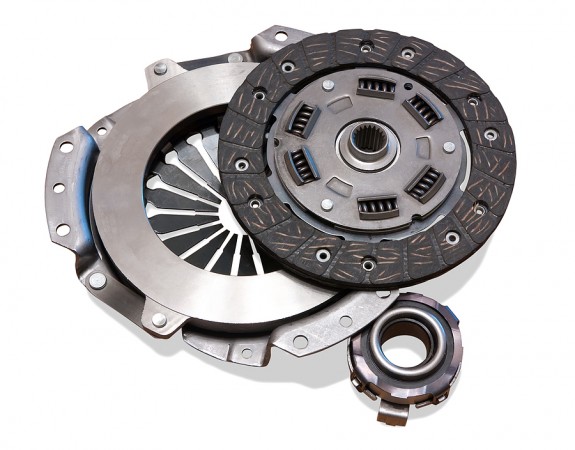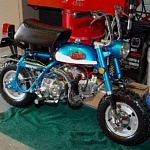Engines are great at making power, but without a good gearbox to channel that power to the ground, your car isn’t much of a car. That’s exactly what a transmission does. It takes rotational force from the engine’s crankshaft and gears it up or down, allowing you to make the most of the engine’s power band. This allows you to do things, such as slowly climb steep hills or blast down the freeway. There are several different styles of transmissions out there. Today we’ll take a look at the most basic: manual transmissions.
In the Beginning, it was One Size Fits All
Manual transmissions, also called standard transmissions or stick shifts, were at one time the only option available for drivers. They feature a clutch pedal and a shift lever, either mounted on the steering column, like in the 1951 Ford (above) or on the floor, like in the 1939 Chevrolet Coupe which the driver moves to select the gear of his or her choice. When automatics became more widely available after World War II, manuals continued as both base-level units and as performance options for drivers who wanted to handle the shifting themselves.
Manual Gearbox Components
Manual transmissions use a smooth flywheel bolted to the engine’s crankshaft. Just behind that is a clutch disc, made of friction material, which is designed to grab at that flywheel. The clutch disc is also directly connected to the transmission’s input shaft. Behind the clutch is a pressure plate, which is connected, either mechanically or hydraulically, to the clutch pedal.
When the driver pushes on the clutch pedal, the pressure plate lifts off the clutch disc. That allows the engine’s rotational power to disengage from the transmission. This allows the driver to shift the transmission from one gear into another.
It Takes Skill
That same pedal is used to slip the clutch slightly on take-off from dead stop. This can be tricky to get right, especially on a hill. But once you get the hang of it, and you get the muscle memory to get it right every time, manually shifting through the gears can be a lot of fun.
Manual Gearbox > Slushbox
Manuals are better than automatics in a couple of ways. They’re a lot simpler internally, usually offer more gears, and tend to last longer than comparable automatics. They also allow engine braking — using the car’s engine to help slow it down. Plus, you’re always in the right gear, since you’re doing the shifting. It’s all up to you. The operation can be as smooth or as harsh as you want it to be.
Separating the Men from the Boys
If you’ve ever driven a muscle car, you know that there’s nothing like rowing your own gears in a Hurst shifter-equipped 4-speed behind a thundering V8. The 1970 Chevelle SS 454 is a great example.
Manual Gearbox Maintenance is an Issue
A significant number of manual gearbox problems are clutch related. Depending on driving habits, clutch replacement can be a regular job, and it’s not usually a small job.
Thankfully, all the parts you’ll need for replacing, rebuilding, or servicing your manual transmission can be found right here on eBay Motors. Whether it’s a clutch kit for your Camaro SS or a complete rebuild kit for the Muncie manual transmission in your GTO, you’ll find what you need here. If you’ve never tackled the task, manual gearbox repairs might be best left to the pros. But if you have a buddy that’s fixed a few in the past, it’s never too late to learn!
Six Speeds are Now the Norm
Modern manual transmissions tend to be found mostly in performance cars. They’ve become much more smooth and well-balanced overall since the days of three-on-the-tree shifting and burly muscle car 4-speeds. Most have six speeds, like the Tremec T56 and most feature overdrive gears, which allow the engine to work less at highway speeds, using less fuel and pumping out fewer tailpipe emissions. They’re great swaps for earlier cars, especially muscle cars that came from the factory with 4-speed manuals and no overdrive gears.
Next time, we’ll take a look at automatic transmissions.







